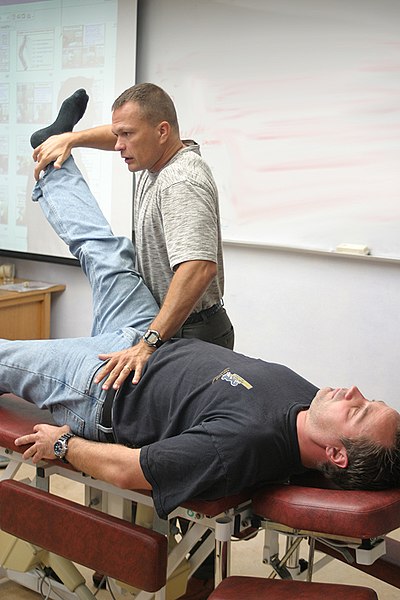Juvenile dermatomyositis
2. How is muscular damage measured?
For the diagnosis of inflammatory myopathies, as well as to monitor the evolution and response to treatment, we need methods to assess muscle involvement. Different methods can assess muscle strength, endurance-fatigability and/or functional capacity.
At the onset of the disease, children, even if they already have a certain degree of muscle weakness, perform compensatory maneuvers that allow them to maintain an acceptable functional capacity. That is to say, despite the weakness they are able to perform their usual activities by making "little tricks".
To assess muscle strength, devices can be used to measure the "amount" of strength such as dynamometers and/or specific maneuvers performed by the physician and/or physiotherapist without the need for special instruments.
We also have scales validated in pediatrics to assess both muscle strength (Manual Muscle Test (MMT) or manual muscle test) and the Childhood Myositis Assessment Scale (CMAS).
1. Manual Muscle Test (MMT) or manual muscle test:
The explorer performs different maneuvers to assess strength at the level of different muscle groups. Initially, the mobilization capacity is evaluated against gravity and subsequently against different degrees of resistance. Each muscle group will receive a score according to the strength it is capable of developing. The greater the strength, the higher the score. The main limitations of this test are:
- It requires the collaboration of the patient, so the age of the child will be a limiting factor.
- The resistance is offered by the examiner, so there may be variability between different examiners.
- It does not evaluate resistance.
The MMT8 is a reduced version of the MMT that assesses unilaterally 8 muscle groups on the dominant side of the patient.

2. Childhood Myositis Assessment Scale (CMAS) or pediatric myositis assessment scale:
Test with different maneuvers designed and validated for the evaluation of muscle weakness in pediatrics. It consists of 14 sections that evaluate the patient's ability to perform certain maneuvers for which the different muscle groups must be used. In addition, the ability to maintain a certain position is evaluated, and depending on how long it is maintained, the patient will receive a higher or lower score. There are maneuvers that are performed while lying on the stretcher, such as raising the head without the help of the arms, raising the leg to touch an object, turning on oneself to get face down, sitting from the decubitus position... Others are performed while seated, such as raising the arms above the head, and in others the patient's movements are evaluated to climb a step, sit down and get up from the floor or get on the floor "on all fours". Each of the maneuvers has a specific score, with the total score on the scale varying from 0 to 52 points. A score of less than 30 is considered moderate muscle impairment.
The main advantage of this assessment scale with respect to the MMT is that it assesses resistance. Its main limitation is that it requires the collaboration of the patient, so it may not be assessable below 5 years of age, and that it requires approximately 20 minutes to be performed. It is important to differentiate between the lack of collaboration of the child or the inability to perform it.
3. The "Hybrid MMT8-CMAS (hMC)" test has recently been published, which includes the complete MMT8 maneuvers and 3 CMAS items chosen by consensus to optimally represent all muscle groups. Each of the maneuvers has been assigned a score so that the overall score is 100. The main objective of this test is to reduce the assessment time required.
In addition to muscular strength and/or endurance, we can assess functionality. Thus, the Childhood Health Assessment Questionnaire (CHAQ) is a survey that evaluates quality of life, i.e. how the disease affects the child's daily life. It consists of different questions about the patient's daily activities such as getting dressed, taking a shower, turning on a tap, climbing stairs, etc. It has several response options: with great difficulty, with some difficulty, without any difficulty. In case the activity asked about is not applicable to the patient due to age or any other reason, there is the "not applicable" response option. This questionnaire is common to the rest of the pediatric rheumatologic diseases and, since it does not require the participation of the physician, it can be done at home or in the waiting room before entering the consultation room. The main limitation of this scale is that if the disability is mild it may not be detected.